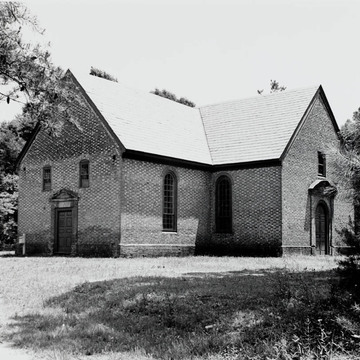An outstanding example of colonial masonry, the front section of St. John's was built first. The 1765 addition created the present T shape. A glistening Flemish bond appears above the water table and English bond below. The pedimented molded brick doorways are beautifully handled. The eight large windows, now lengthened, have semicircular arches with rubbed brick voussoirs. On the interior, the west and north galleries date from the enlargement. The reredos—13 feet, 3 inches wide—is the outstanding feature of the interior, but it probably is not original to the building since it does not fit into the space. Abandoned at disestablishment, the church was used by various groups. After the Civil War, the building was reconsecrated as an Episcopal church.
You are here
St. John's Episcopal Church
If SAH Archipedia has been useful to you, please consider supporting it.
SAH Archipedia tells the story of the United States through its buildings, landscapes, and cities. This freely available resource empowers the public with authoritative knowledge that deepens their understanding and appreciation of the built environment. But the Society of Architectural Historians, which created SAH Archipedia with University of Virginia Press, needs your support to maintain the high-caliber research, writing, photography, cartography, editing, design, and programming that make SAH Archipedia a trusted online resource available to all who value the history of place, heritage tourism, and learning.














